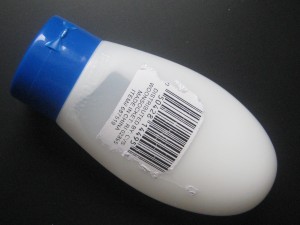Years ago, around the turn of the millennium, I was walking near the Conservatory of Flowers in San Francisco’s Golden Gate Park when I saw an impeccably dressed man blow his nose and then toss his tissue into the manicured garden. I was outraged at this behavior and also by the realization that, since I myself was too meek to beard him, he was about to get away scott free.

It was at that moment I decided to create an online bulletin board where people could register outrageous things they saw other people do. On some level, miscreants like this could be brought to justice if only in the mind of the poster. I registered the domain name that day: isawwhatyoudid.com.
That was a nasty and brutish era where there was no Facebook, no Twitter (imagine!) which today could serve the purpose of venting my outrage. I never got around to doing anything more with the concept and after a couple of years I let my ownership of the domain lapse. It was immediately snatched up by Warner Brothers, probably as the website for a teen movie they were planning. But the movie never got off the planning stage, they in turn let their ownership expire, and I bought it back again.
I think this website could still be useful today, for a somewhat different purpose. Above is a photo of an outrageously worthless product I bought at my local CVS pharmacy. It’s a travel-size bottle to be filled with shampoo or whatever, and it’s an abomination because the screw top doesn’t seal. If I had taken this on a trip it would have leaked all over and made a mess when air pressure changed on the airplane.
At $1.99 my reasonable response would have been to just throw it away, but instead I took it to CVS and got a refund and asked the cashier, a competent woman named Jodi, if she would report it to corporate and ask them to stop carrying this defective product. She said she would but I have doubts how much difference it will make. So let’s suppose I also record my story on isawwhatyoudid.com. In its new configuration the site is not going to be an organized BBS, just a soup of angst where people can post whatever they like (except there will be an adult content filter) and it goes into a searchable database.
Thus, months after my experience, when another customer has their Louis Vuitton toilet bag ruined by one of these bottles and sees that CVS was asked to stop selling them but did not, then they will have some fodder for appropriate action. Make sense? There will also be a tag cloud documenting the frequency with which certain words or phrases are used…. Unlike the tag cloud on this blog, which is created manually, it will grow organically like a boil to reflect current topics. Commonly used words will be excluded from the tag cloud and there will be extra weight for recency so it’s constantly changing and relevant.
Actually, I’m probably going to be too busy to do anything with this for awhile. If any of my readers wants to take this project on, shoot me an email.